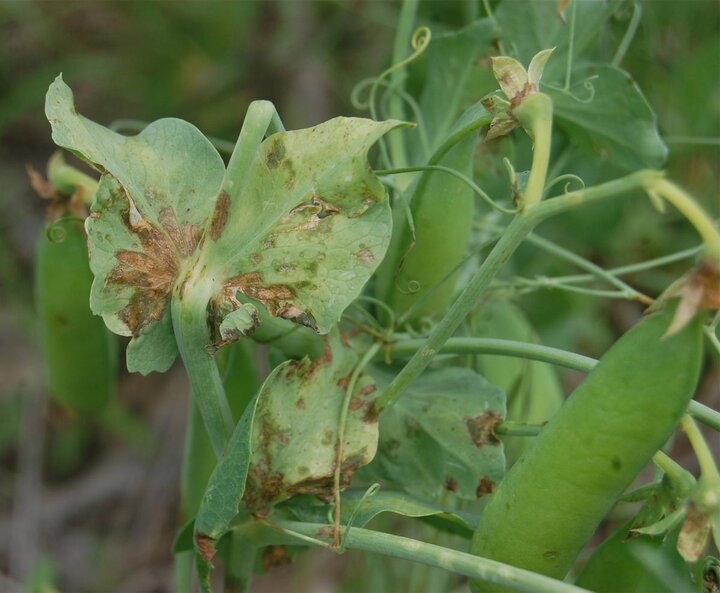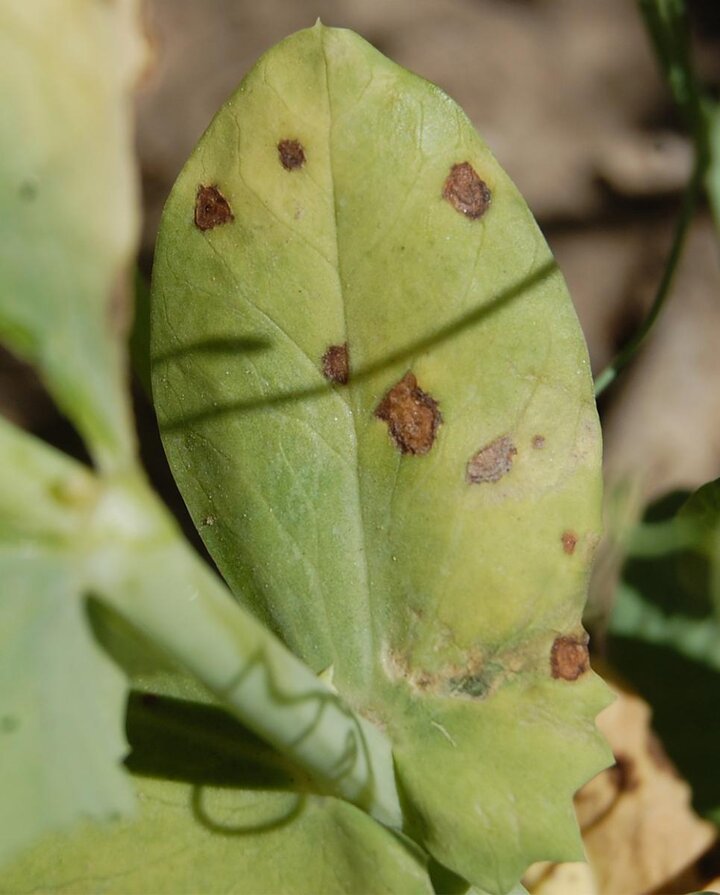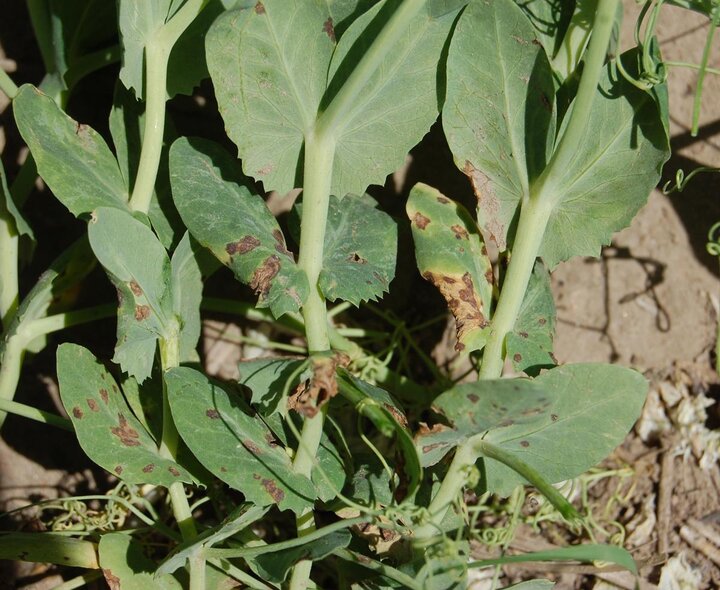


Figures 1a-c. Bacterial blight symptoms of dry pea.
The last three years (2013-2015) have seen an increased interest in growing dry yellow peas in Nebraska and other states in the Central High Plains. This is largely because dry peas are a short season crop with a relatively low water requirement, a benefit to those with critically limited water resources. Growers may also be interested in the benefits dry peas may bring to their crop rotation. Research in South Dakota showed yield increases from dryland wheat following pea.

Dry Pea Diseases
Based on the increased dry pea acreage throughout western Nebraska, we conducted a comprehensive disease survey in 2015 to identify the most prevalent and important disease issues in Nebraska production. We surveyed more than 30 fields and collected 300+ samples from fields representing most of the counties in western Nebraska that grow peas, including Sheridan, Box Butte, Morrill, Keith, Garden, Deuel, Cheyenne, Kimball, Banner, and Scotts Bluff. We additionally collected samples from two seed production fields in Arnold County, northeast of North Platte.
The primary problem consistently observed across the region was a bacterial blight complex. This is caused by at least two distinct, but closely related pathogens: Pseudomonas syringae pv. pisi (Psp) and Pseudomonas syringae pv. syringae (Pss). The Pss pathogen is well-known to dry bean growers in Nebraska and is the causal agent for bacterial brown spot disease. Psp is more restricted in host range causing a leaf spot and blight disease primarily on peas.
We are also studying additional bacterial cultures found as part of that complex. One of these was identified as Erwinia rhapontici, causal agent of a disease called pink seed. This is a significant finding as it is also a pathogen of dry beans and wheat, both of which would likely be grown in rotation with dry peas. However, at this point we are unsure of its specific role in this complex; it was simply one of the bacteria we isolated that also was pathogenic on peas. We are continuing work to identify several other bacterial isolates.
During the course of this survey, we also detected several root rot diseases including Fusarium and Rhizoctonia root rots, and charcoal rot (also known as ashy stem blight in dry beans). In several very wet irrigated fields, white mold was also observed, but was not widespread throughout production areas. Lastly, we identified powdery mildew in one particular field that was planted late, but not in any fields planted at the normal time.
In conclusion, our survey results from 2015 suggest that several bacterial diseases appear to be the most common diseases seen in this first year of comprehensive surveying.
New Study in 2016
Based the results of the survey in 2015, we will also conduct a study to begin managing the bacterial complex. This builds on studies conducted over the last several years with bacterial diseases of dry beans.
One of the few options for managing bacterial diseases in bean has been chemicals containing copper; however, their effectiveness at successfully increasing economic returns has been inconsistent. Thus, we have been testing new products with unique modes of action (such as hydrogen peroxide) and comparing their performance to copper-containing products for managing bacterial diseases in beans. We plan to employ these new products and evaluate their ability to reduce disease in field peas, much as we did with dry bean diseases.
